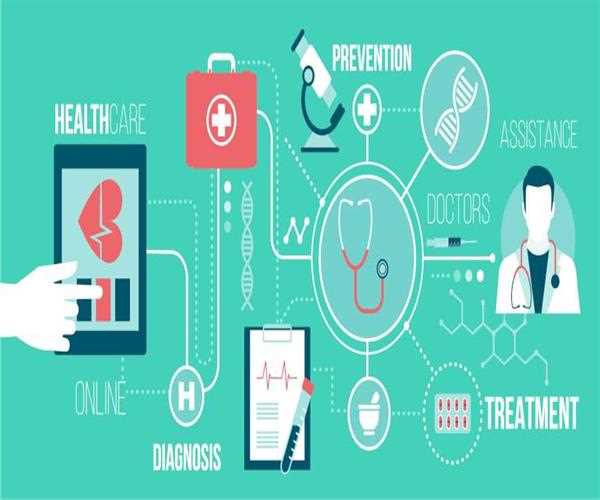Although we don’t often notice it in our day-to-day lives, artificial intelligence is slowly changing everything around us- from how we search the web all the way to autonomous cars. While 66.4 million Americans own a smart speaker and there are 1,400 self-driving vehicles on the roads, we tend to forget just how much AI affects our healthcare systems, too.
Here we’ll go through a few of the ways artificial intelligence has changed our healthcare system for the better, and what we’re going to see in the future.
Drug discovery
We’re all aware of how expensive and time-consuming it is for pharmaceutical companies to develop a drug, however, the AI benefits of this process are currently speaking for themselves. According to Healthcare Weekly, time-saving pattern recognition technology could completely change the way companies identify and test new drugs.
Start-ups such as Verge Genomics and BenevolentAI are currently making waves in the industry through the use of clever algorithms that comb through data that is far too complex for humans. AI company Insilico, on the other hand, is using the technology to design treatments not yet found in either nature of chemical libraries.
It is even thought that AI could help to create personalized medicine by analyzing large amounts of patient data to identify treatment options. This would be used through cloud-based systems able to process natural language - making for the most patient-focused assessment possible.
Diagnosis from afar
Diagnosis, particularly for those living far away from larger or specialized hospitals, can seem to take forever. That’s because it simply isn’t as simple as seeing a doctor sometimes - patient data has to be gathered, results have to be analyzed, and appropriate treatment has to be determined before work can even begin on helping to improve the health of a patient.
AI systems such as DXplain, however, can now run through a set of patient symptoms to come up with a list of possible diagnoses. This can massively speed up the process and helps to dramatically cut the workflow of already-stretched doctors. Oncologists in larger hospitals are currently using similar systems to diagnose patients in remote areas.
In 2018 Aidoc announced that it had been FDA-approved on its first AI workflow solution to help diagnose bleeds on the brain. With the help of radiologists, the team has created a system which ate 2018 marked the announcement from Aidoc that it had been granted its U.S. FDA clearance of its first AI-based workflow solution, the diagnosis of bleeds on the brain.
The systems created work with radiologists to create the system which flags acute intracranial hemorrhage (ICH) in CT scans. It is hoped that this will massively reduce the workload of radiologists, enabling them to focus on patient care.
Patient monitoring
Northwestern Medicine recently hit the news for launching an application that allows parents to track the progress of their children in the ICU. The NICU-2-Home app allows parents to go home to rest in-between hospital visits with the ability to see what’s happening to their baby.
Orthogonal notes that smartphone market analysis for connected medical devices (SaMD) will help developers such as those of the app above to see the demographics of users to be able to create better-tailored apps and content. Thanks to AI, we now analyze more than ever before at a super-fast speed, helping the healthcare industry to keep up to speed.
Chatbots
Customer service is becoming more and more automated as time goes on, and chatbots are soon set to completely replace call lines altogether. In healthcare, these bots have the ability to completely transform the way patients are seen and treated while decreasing visitor numbers to the hospital.
Bots can help to diagnose patients, help them to pay hospital bills, and schedule follow-up appointments all in a very quick and hassle-free manner. One of the biggest benefits is chatbots don’t need lunch breaks or time off, which is unsurprisingly appealing to healthcare companies, but also means that patients can receive 24/7 care from anywhere with an internet connection.
While you may be used to seeing chatbots pop up on websites, you’ll soon be using them to navigate the healthcare system. The chatbot industry is set to grow by $542.3 million by 2026.
Cybersecurity
Healthcare organizations are currently looking to use modern management systems to protect their Windows systems. It’s no secret why - 89% of healthcare organizations experienced a data breach in the past two years. Through the use of AI, analysts will be able to focus on educating users of the measures to take against cyberattacks, increase security on its systems, access security shortages and discover new threats.
It’s risky business, however, as personal health records are highly sought after by cybercriminals and are worth 40 times the amount of credit card details on the black market. By using the latest technology, healthcare IT workforces will be able to significantly reduce threats and develop a much more effective system. It’s so important that healthcare companies can be trusted with patient data.
Pain management
Studies believe that by combining artificial intelligence with virtual reality, the healthcare industry could create events that aim to distract patients from the pain they may be feeling. By helping patients to manage pain more effectively, the use of pharmaceutical drugs could decrease - helping them to work at their best when patients need them the most.
It is thought that this technology could even help to reduce the opioid crisis, which is currently causing thousands of deaths worldwide.
Conclusion
It’s clear to see that AI, when applied properly, is going to totally change the future of the healthcare industry. Whether it’s used to diagnose patients, keep records safe, or develop and test new drugs, the technology will dramatically cut back the heavy workload of staff to enable them to focus solely on patient care. We’re set to see a much more organized and fluent system hit the US in the coming years.




Leave Comment